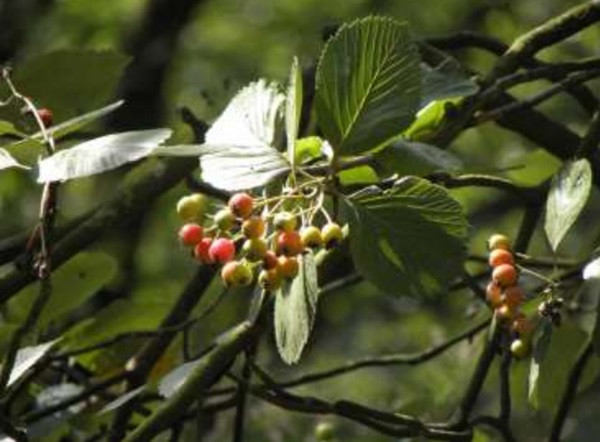 The common whitebeam (Sorbus aria);
Credit: Natur&ëmwelt
The common whitebeam (Sorbus aria);
Credit: Natur&ëmwelt
Natur&ëmwelt, a leading nature conservation NGO in Luxembourg, named the common whitebeam (Sorbus aria) the tree of 2024.
The common whitebeam (l'Alisier blanc), often overlooked despite its essential contribution to Luxembourg’s green spaces, deserves increased attention for its ornamental beauty, its ecological importance and its fascinating history, natur&ëmwelt added.
The common whitebeam’s silver foliage and small white flowers gathered in clusters make it an ornamental choice in parks, gardens and public spaces. Its presence adds a touch of freshness in spring with abundant flowering, and its ability to maintain bright red berries throughout winter makes it an attractive choice for gardening enthusiasts.
Originally from Europe, the common whitebeam has a history that dates back centuries, natur&ëmwelt noted. Formerly used for its wood in making handicrafts, it has also been valued for its traditional medicinal properties. Today, this tree is a popular choice among landscapers and gardening enthusiasts due to its versatility and ease of care.
In addition to its visual appeal, the common whitebeam plays a crucial role in the local ecosystem. The berries it produces are an essential food source for many birds during the winter months, helping to preserve biodiversity. In addition, its roots act as a natural barrier against soil erosion.
The common whitebeam is not limited to its decorative function. Its wood, although less prized than other species, continues to be used sustainably, highlighting the versatility of this tree, according to natur&ëmwelt.
As biodiversity and environmental preservation become central concerns, natur&ëmwelt Asbl stressed that it is imperative to recognise the value of this beautiful tree species. The planting and preservation of the common whitebeam should be encouraged to ensure its continued part in the local ecological balance.









